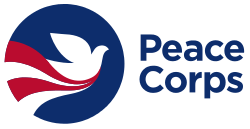 A few organizations and individuals have told me they aren’t happy that I don’t follow them on Twitter and Facebook and Google+, and, in addition, that I don’t also subscribe to their email newsletters and subscribe to their blogs.
A few organizations and individuals have told me they aren’t happy that I don’t follow them on Twitter and Facebook and Google+, and, in addition, that I don’t also subscribe to their email newsletters and subscribe to their blogs.
Here’s the deal: you have to earn my follow on Twitter.
I follow you on Twitter if most of your posts are:
- conversation starters
- provocative (make me think)
- elicit feedback
- directly, immediately relate to my work
If, by contrast, I really like your organization, but your tweets are mostly positive, benign PR pieces like
- “We have a new catalog”
- “Our volunteers are hugable”
- “Our Executive Director is at such-and-such conference”
- “Our shop hours are changing for winter”
I’m probably going to follow you on Facebook rather than Twitter (if at all).
In addition, if you post to Facebook and you gateway those posts to Twitter, I’m probably going to just follow you on Facebook as well, and not at all on Twitter, because it’s doubtful your message is something I need to read ASAP, and it’s probably too long for Twitter anyway (I really hate truncated Tweats that end with a link to a Facebook status).
I check Twitter at least twice a day. To me, it’s a place for information exchange and debate, and for breaking news, for you need to look at this NOW messages. I’ve noticed that organizations, institutions and consultants that use Twitter with this in mind aren’t surprised when they get comments or questions via Twitter – they even seem to delight at such. By contrast, organizations that use it primarily as an announcement tool get immediately defensive when someone tries to engage them on Twitter – and it’s why I prefer to follow those organizations on Facebook.
Same if most of your posts are “I’m at the airport” or “I’m at such-and-such conference.” It’s nice to know that, but it’s not that much of a priority, so I’ll follow you on Facebook instead.
I check my professional account on Facebook about once a day. I scroll through the updates to get a general idea of what organizations are up to. Not much in term of exchanges or debates are going on over on Facebook among the organizations and institutions I follow – it’s more of a “hey, look how fabulous we are” or “hey, we need money!” place. That’s a shame – it could be so much more – but that’s how it’s shaking down among the organizations I follow on Facebook (and GooglePlus, for that matter). So I pour myself a second cup of coffee and slog through your Facebook status updates, rarely finding anything that makes me go “Wow.” Exceptions? There are a few – and I’ll highlight those on next week’s blogs.
And I may choose to read your email newsletter instead of following you on Facebook or Google Plus or Twitter. Don’t be hurt. I like email newsletters. I like that long moment of single focus and well-written narrative that gives me a more detailed picture about your work than any Tweet or Facebook status update could allow. I do my best to make time to read all that I subscribe to. And as I still have more subscribers for my own email newsletter, Tech4Impact than Twitter or Facebook followers, I appreciate the value of email newsletters.
So, how should you follow me online?
- Follow me on Twitter if you want lots of short updates from me regarding nonprofits / NGOs, volunteers / volunteering, humanitarian / development / aid, communications, tech4good, and empowering women & girls (updates regarding national and state parks, and tourism as a development tool, are also showing up as well). Or if you want to engage, today, right now, about any of those topics, in a very public way.
- Follow me on Facebook or Google+ if you want just 1-3 short updates from me a day, mostly only about what I’m doing: a new web page, a new blog, a conference where I’ll be speaking, etc. And, FYI, there’s nothing I post at Facebook or Google+ that I don’t also post on Twitter; I repeat probably only 25% of what I post to Twitter on Facebook and Google+. And, yes, I post exactly the same things to Facebook and Google+ – I’ve yet to see any reason to use them differently.
- Subscribe to my email newsletter if you want to hear from me just once a month, or you want a once-a-month tech tip, in detail, especially for nonprofits, then subscribe to Tech4Impact. You will also get a list of all the blogs I’ve published in the last four weeks or so. I get the impression that each of my email subscribers also follow me on Facebook OR Google+ OR Twitter, but not all three.
That’s not how everyone uses social networking. But that’s how I’ve decided to use it. And it could change. In fact, it’s guaranteed that it WILL change, as social media changes.
I would never expect anyone to follow me on on Twitter and Facebook and Google+, and to subscribe to my email newsletter. Unless you were some freaky stalker. Please don’t be a freaky stalker. You probably don’t need to hear about a web page I’ve just updated four times in one morning.
What about LinkedIn? Those connections are for my professional colleagues, PERIOD. Keeping it as a professional networking space has what kept it so valuable to me.
Also see:
- It’s okay to say “no” to an online connection
- LinkedIn for Nonprofits? The Good & Bad
- All of my online activities

